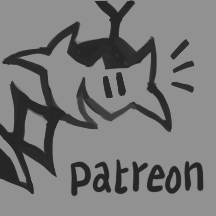Fruit Frog

A frog species that tends to flower and sometimes develops fruit. Even if the fruit frog will never develop fruit, it can still be referred to as of the fruit frog species, though "flower frog" is the preferred term when addressing individuals who will never form fruit. Those who develop fruit are generally female, and those who remain forever flowered are generally male.
Hereditary influence: high
Environmental influence: moderate
Native to: Owel
Language: Plant, though many learn Common
Ability to reason: moderate to high
Climate preference: varies depending on flower or fruit
Found in: South of the Miaoustok Mountain Range
Elements
Affinities: Earth, Water, and Acid are most common, though each of the other affinities have been reported and documented
The affinity (or affinities) of the fruit frog tends to stem from the fruit it came from, though sometimes the environment will come into play if strong environmental magic is in the vicinity.
Weaknesses: Ice and Fire magic are the most effective against fruit frogs, usually. Any magic affecting the flower or fruit on its body is also more effective.
Resistances: Fruit frogs are naturally resistant to bad luck, though not impervious to it.
Abilities
Fruit frogs (with fruit) are able to share a special ability with friends or family; this ability is different from whatever their own personal ability or abilities might be. Sharing the fruit on their body is all that is needed in order to share the special ability. They can't eat pieces of their own fruit in order to gain the fruit's ability, as it is strictly reserved for sharing with others.
Physiology and Reproduction
It's impossible to tell if a fruit frog has male or female organs until they reach the flower stage of life. Male flowers will have stamens and female flowers will have a pistil; rarely, a frog will be born with a flower that has both. A flower with solely male reproductive organs will be unable to produce fruit; a flower frog with female reproductive organs can delay developing fruit by avoiding pollination.
A fruit frog's development starts when a capricornucopia's fruit starts to fall into the mini-pond around it. This fruit is a culmination of "pure" fruit and crosses of the fruit that went into the capricornucopia's birth. This fruit floats until a flower frog helps by burying the fruit in the mud at the bottom of the pond. From here, the seeds break out of the fruit and become seedpoles. At this point, the pond is swimming with seedpoles that develop into budpoles. The capricornucopia spends all of its waking hours talking to the children and educating them. The flower frogs who guard the capricornucopia are ever-vigilant in making sure nothing happens to the babies of the pond.
Eventually the babies mature and reach the flower frog stage, where they will stay to help take care of future seeds. The flower frogs who develop fruit tend to leave their birthplace in order to meet other fruit frogs and other fruit-bearing individuals. After living their life and nearing the end of their natural lifespan, they are ready to give up their fruit. At this point, they seek out a good location for a new capricornucopia, and they start making a tiny pond that serves as a "moat" for the capricornucopia. Along the way, they will try to enlist help from flower frogs in their friend or family circle, usually from the fruit frogs' birthplaces. These flower frogs are responsible for seeing to the growth of the new capricornucopia.
When the preparations are complete, the fruit frogs take all the fruit off of their body -- stem and all. This signals to the fruit that it's time to form a capricornucopia, and it signals the impending death of the fruit frogs. They place their fruit in the middle of the pond's "island" and then celebrate by telling stories all night. The next day they will enter the hole with the fruit and die, rapidly decomposing afterward. Their bodies serve as nutrients for the development of all of the fruit into a capricornucopia. The flower frogs are left to care for the pond and the new growth.
Capricornucopias have a personality that's a mesh of all the individuals who put their fruit and seeds into the mix. Contrary to popular belief, you can mix in seeds from other species into the capricornucopia's growth, as long as it's done on the first day. This can introduce strange crosses and hybrids into the fruit frog species. Fruit frogs are usually sterile and unable to conceive; capricornucopias are the only method of reproduction available to most of them. For this reason, capricornucopias are not seen as a separate species, but as part of the fruit frog species. (Fruit frogs would agree with this assessment.)
Additional Notes
Capricornucopias are the foundation of most fruit frog communities. They share the intuitive collective knowledge of all of the individuals whose fruit and seeds went into it, though they don't have perfect memory recall of things that happened to those who contributed to the capricornucopia's growth. They shape the development of the seedpoles and budpoles that emerge from their seeds.
See Also
- Original Post. Art by Glip with help from Exty.





![[Beleth looking bored]](https://floraverse.com/static/images/global-title-foreground-left.png)

![[Andre looking proud of his graffiti]](https://floraverse.com/static/images/global-title-foreground-right.png)






